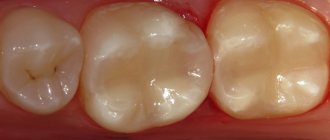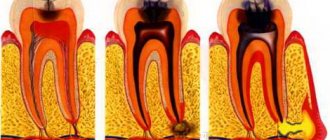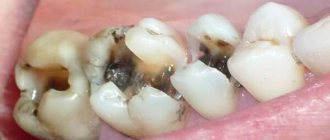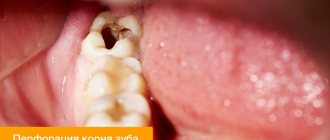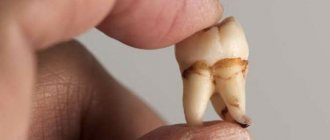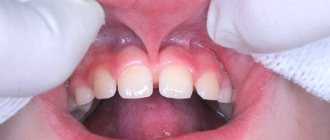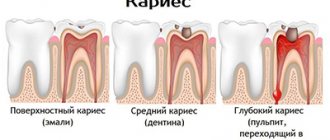30.05.2019
Progress does not stand still! It is with this obvious truth that I would like to begin today’s article. This applies to all areas of our lives, and by a happy coincidence, dentistry included! Every year, more and more new materials enter the dental market: safer, more aesthetic, and more practical to use. A constantly developing dentist now has in his arsenal high-tech devices and modern materials that allow him to provide high-quality, comfortable, and most importantly, safe dental care.
However, this was not always the case. Just some 10-15 years ago, treatment methods were still actively used that were not only unaesthetic, but also far from safe. The most striking example of this is amalgam fillings.
In historical essays, fillings similar in composition began to be used more than 100 years ago. Amalgam was an alloy of various metals, such as mercury, silver, tin, zinc, copper, etc.
The creation of such a material was made possible thanks to the ability of mercury to dissolve other metals in itself.
Example of an amalgam filling (work taken from the Internet)
Its main advantages were considered to be: strength, lack of visible abrasion and chipping, antiseptic properties of silver, and the ability to inhibit the progression of caries. The last point is very controversial, because under amalgam fillings, in the vast majority of cases, we find a recurrence of caries.
What is amalgam?
Amalgam is a mixture of metals that has been widely used as a filling material for 150 years.
Dental filling: topic overview
Although sometimes called "silver amalgam", it is actually a mixture of several metals such as silver, mercury, tin and copper. May also contain small amounts of zinc, indium and palladium. Nowadays, materials that are close in color to the natural color of teeth are also used for fillings. Because of this, amalgam is not used as often as in the past.
However, modern materials are not applicable in all cases. Dental amalgam is less expensive than other materials. In addition, over time, it takes root better, especially in teeth that receive the most pressure and become damaged by chewing.
Back to contents
Important!
Composition of modern amalgams:
- silver (66–73%), provides strength and resistance to corrosion, causes expansion when hardening;
- tin (25–29%), increases the plasticity of amalgam;
- copper (2–6%), gives strength and ensures that the filling adheres to the edges of the cavity, also has antibacterial and anti-corrosion properties;
- zinc (up to 2%), reduces the oxidation of other alloy metals;
- mercury (up to 3%), the main reagent, solvent, causing the formation of amalgam.
How safe is dental amalgam?
Millions of people have amalgam fillings. But many are concerned about the mercury content in it.
A lot of research has been done in this area. No reason has been identified to limit the use of amalgam in fillings. It was concluded that amalgam fillings are safe for adults and children aged six years and older.
However, some groups insisted that the issue be revisited. A follow-up study is currently underway.
Back to contents
What are the advantages and disadvantages?
If you have an old filling in your mouth, but you do not know how to distinguish it and how to determine that it is made of amalgam, it is better to consult a specialist for advice. In fact, this material has a number of obvious advantages, including low cost, ease of installation (one hang is enough), as well as a long service life - 7-10 years or even more, of course, subject to proper and regular oral care.
“About 10 years ago I visited a dentist in Germany; I urgently needed a filling. I remember that she then dissuaded me from using the plastic one, saying it would put pressure on my gums. She said that the cement one will stand for 2 years and she will install amalgam. Then only at home I read that they still need to be polished every other day. I decided not to take any more risks, not to go to the same doctor. I just tried not to chew on that side, so it froze normally.”
KattrinM., from correspondence on the forum www.32top.ru
This option is only suitable for chewing teeth.
But since the material is truly outdated, it has significantly more disadvantages compared to other modern composites. And here are the main ones:
- low aesthetics - this option is only suitable for chewing teeth,
- high risk of re-development of caries - due to insufficient adherence to dental tissues,
- discomfort while chewing food - due to the difficulty of recreating an exact anatomical copy,
- increased sensitivity - the presence of metals can provoke an acute reaction when the tooth comes into contact with cold or hot. A special pad reduces sensitivity,
- possible allergic reactions are not a very common occurrence, but since metals are allergens, this can also happen.
If during pregnancy the need for filling arose, then it is better to abandon amalgam in favor of a more modern and safe composite. If pregnancy occurs after the procedure, it is better to postpone replacing the filling until childbirth and the end of the lactation period.
Why is the presence of mercury in amalgam a concern?
Mercury is a metal that is naturally present in the environment. It can be in the form of a liquid, as in many thermometers. When exposed to heat, it is converted into gas. It can also connect with many other elements.
We all come into contact with mercury in one way or another: through air, water, soil and food. Many people worry, for example, about the amount of mercury that accumulates in fish as a result of contamination. Mercury enters the air through factories that burn mercury-containing fuels. Once in the body, mercury, from whatever source it may be, can begin to accumulate in the organs.
All about tooth filling: how does it happen and what to fear?
As with other substances, the amount of harm it causes depends on the amount. Very low levels have no adverse effect. Higher levels, such as in people whose jobs involve exposure to mercury, can cause different symptoms. Manifestations may include the following : anxiety, irritability, memory impairment, headaches and fatigue.
There is debate about how much mercury is released from fillings and how much is absorbed into the body. In the past, amalgam fillings were considered neutral. That is, it was assumed that after filling a tooth with such a filling, mercury was not released from it. In recent years, modern testing has forced us to reconsider this point of view. When wearing an amalgam filling, it releases very small amounts of mercury in the form of vapor.
Research on this issue is complex, and each time there are different estimates of the actual amount of mercury released. The amount of mercury released from amalgam fillings has been found to be less than what we are naturally exposed to through food.
Back to contents
How filling is carried out - description of the process in stages
The installation of an amalgam filling can be divided into several independent stages. Let's take a closer look at this sequence:
- preparatory measures: this includes cleaning the teeth from plaque and stone, administering anesthesia and fixing the rubber dam. Next, the doctor prepares the carious cavity, removes all affected tissue and carries out disinfection treatment. In this case, the thickness of the tooth walls should be slightly greater than required when filling with modern composites. A small cut should be left at the junction of enamel and dentin to improve retention. The tooth is washed and dried,
- application of a gasket: required to reduce tooth sensitivity, which can develop due to the increased thermal conductivity of the material. Its optimal thickness is 1-1.5 mm,
- amalgam mixing: carried out mechanically using a special electric mixer,
- installation of a filling - amalgam is applied in small layers using a special gun, waiting until it completely condenses before the next application. It is important to prevent the material from becoming porous and to remove all excess mercury. The cavity is filled, after which the edges are carefully removed, immediately forming a preliminary crown shape.
The amalgam is applied in small layers.
The final modeling of the restored area involves the application of tubercles and fissures. After this, occlusion control is required, for which special articulation paper is used. The filling itself is ground and polished only after a day. In this process, it is important to prevent overheating and evaporation of mercury, so water cooling is usually used.
Should women get amalgam fillings?
The study found no negative effects of amalgam fillings on the health of pregnant women. However, mercury can cross the placenta. In general, dentists recommend that pregnant women avoid any dental surgery unless it is necessary.
Pregnant women should not have amalgam fillings. If a pregnant woman needs to fill a cavity in her tooth, her dentist may advise her to get a filling made from a different material.
Back to contents
Contraindications for installation
The material is not used if the patient has an individual intolerance to metals and a tendency to allergic reactions. This restoration option is not suitable if you already have structures made of solid metal and metal-ceramics installed in your mouth, and also if you want to restore your front teeth.
Important! Since 2021, the use of amalgam filling material in dental treatment for pregnant and lactating women and children under 15 years of age has been prohibited in the European Union.
If amalgam is safe, why does the dentist take precautions when handling it?
Since dentists come into contact with mercury almost daily, they must take precautions. Without protection, mercury vapor can enter the respiratory tract with air. And this can over time lead to manifestations indicating mercury poisoning.
To make dental amalgam, dentists mix liquid mercury with a powder containing silver, tin and other substances.
Dentists buy special capsules that contain such powder and liquid mercury, separated from each other by a special film. They use a special machine to pierce the film and mix the powder with the mercury while it is still in the capsule. After mixing, the capsule is immediately opened. By the time the amalgam is placed into the tooth, the mercury has already combined with other metals. It is no longer toxic.
If you decide to get an amalgam filling or are having one removed, your dentist will use a high-powered suction device to remove any excess amalgam in your mouth. Dental offices have special devices for removing excess amalgam. Special filters in the sink drainage system and suction tubes prevent amalgam from entering the drainage system.
Back to contents
Defense arguments
Dentist of the highest qualification category, specialist in the field of endodontics, candidate of medical sciences Sabina Nisanova.
Amalgam is indeed one of the oldest and most studied filling materials, used in dentistry for about two centuries. But it is not outdated. To this day, amalgam is in demand throughout the world, in particular in civilized Israel, Germany and the USA. These are the fillings they make there under insurance – free of charge for patients, since amalgam is a cheap, unpretentious and durable material. The main advantages of such fillings are that they do not shrink and, due to the silver content in them, have antiseptic properties. And modern composite materials (the same light fillings), on the contrary, shrink. That is, over time, they shrink towards their center - and microgaps appear between the tooth and the filling, into which bacteria and food particles can enter and cause secondary caries. Amalgam is resistant to chewing loads, reliably and hermetically closes the defect in the tooth, and even after decades there is no recurrence of caries under it. In addition, silver, a known antiseptic, provides additional protection against bacteria.
Article on the topic
“Written in the family”? Dentist - about the main causes of dental diseases
Any composite has a shorter shelf life than amalgam, so light fillings must be replaced, while amalgam can last in the mouth for at least 20, at least 40 or even more years.
Such an authoritative organization as the US Food and Drug Administration has also spoken out about the safety of amalgam for adults. Today, almost all major Western manufacturers have resumed previously suspended production of this material. Only some countries prohibit the use of amalgams (for example, Norway and Sweden). In other countries, silver fillings are not recommended for children and pregnant women. Contraindications are also an allergy to silver or any other component of fillings and the presence of a pacemaker. But, by the way, allergies to composite (light) fillings are not much less common than to silver amalgam.
As for the release of toxic mercury vapor from amalgam, numerous studies show that it is extremely insignificant and therefore cannot cause any significant harm. A person receives much higher doses of mercury from food (fish, seafood), from air poisoned by industrial emissions, automobile exhaust, and from smoking.
Regarding the removal of amalgam fillings, of course, the doctor needs to follow safety precautions: wear special glasses and a mask, use a special powerful vacuum cleaner, protect the patient’s oral cavity with a rubber dam, cover his nose with a napkin. In this case, the risk of poisoning will be minimal.
It crunches, it smells, it clicks. 9 good reasons to visit the dentist Read more
Are there alternatives to amalgam?
Now there is dental amalgam that, along with mercury, also contains indium. Indium helps retain mercury, which helps reduce its release into the atmosphere. There are also amalgams with a high tin content, in which there is more tin and, on the contrary, less mercury.
Dentists also use other substances for filling:
- composite plastic,
- porcelain,
- gold,
- ceramics.
Amalgam is stronger than composite resin, and fillings using amalgam are faster. Composite resin is a material that is close to the natural color of teeth. Since such fillings deteriorate more quickly than amalgam fillings, composite resin is not acceptable in all cases.
Back to contents
Main advantages
The material turns out to be very plastic, and therefore easy to apply and simple to work with. After free mercury is released, it hardens on its own, meaning restoration does not require the use of expensive equipment.
What other advantages are there due to the composition:
- high strength and wear resistance, ability to withstand any chewing loads,
- long service life: from 10 years or more with careful care,
- possibility of installation in a damp tooth cavity,
- anti-corrosion properties,
- antibacterial effect,
- preservation of shape and color,
- good penetrating ability: in the presence of zinc in the composition, it penetrates well into small cracks in hard tissues and seals them,
- high radiopacity.
Kinds
The material is classified depending on its composition, morphology, and functional purpose.
Depending on the composition, amalgams are divided into the following types:
- simple - consist of 2 metals (Cu, Hg);
- complex – contain 2 or more metals (Cu, Hg, Ag, Zn);
- silver – contain less than 6% copper;
- copper – contain 12-30% Cu;
- high-copper – 32-37% Cu;
- zinc-containing – with a mixture containing more than 0.01% Zn (zinc-containing amalgams are distinguished by high strength, high-quality edge fit, and long service life).
Depending on the morphology of the particles, they are distinguished:
- Needle amalgams. This is a traditional form in the form of sawdust, having a size of more than 160 microns. It is obtained by grinding an alloy workpiece on a lathe. Needle-shaped forms are characterized by rigidity during packaging and the highest mercury content.
- Spherical amalgams. Round particles 4-40 microns in size. Their advantages are a reduced mercury/alloy ratio, faster hardening, the ability to apply less pressure during condensation, and good polishability.
- Mixed. They are a mixture of spherical and needle-shaped shapes. The properties depend on the relative content of the spherical and needle phases.
How to remove a filling and replace it
Removing filling material requires very careful cleaning of the cavity and complete disposal of used raw materials. A drill is not suitable for this - the seal is cut crosswise, after which it is carefully removed in parts. Instead of a diamond bur, special steel cutters are used. The surrounding space must be isolated with a rubber dam.
All seized items are placed in a sealed case and disposed of in accordance with established regulations. However, it is not recommended to remove the filling during pregnancy and breastfeeding. In all other cases, experts advise taking activated charcoal and vitamin C before removing or replacing.

